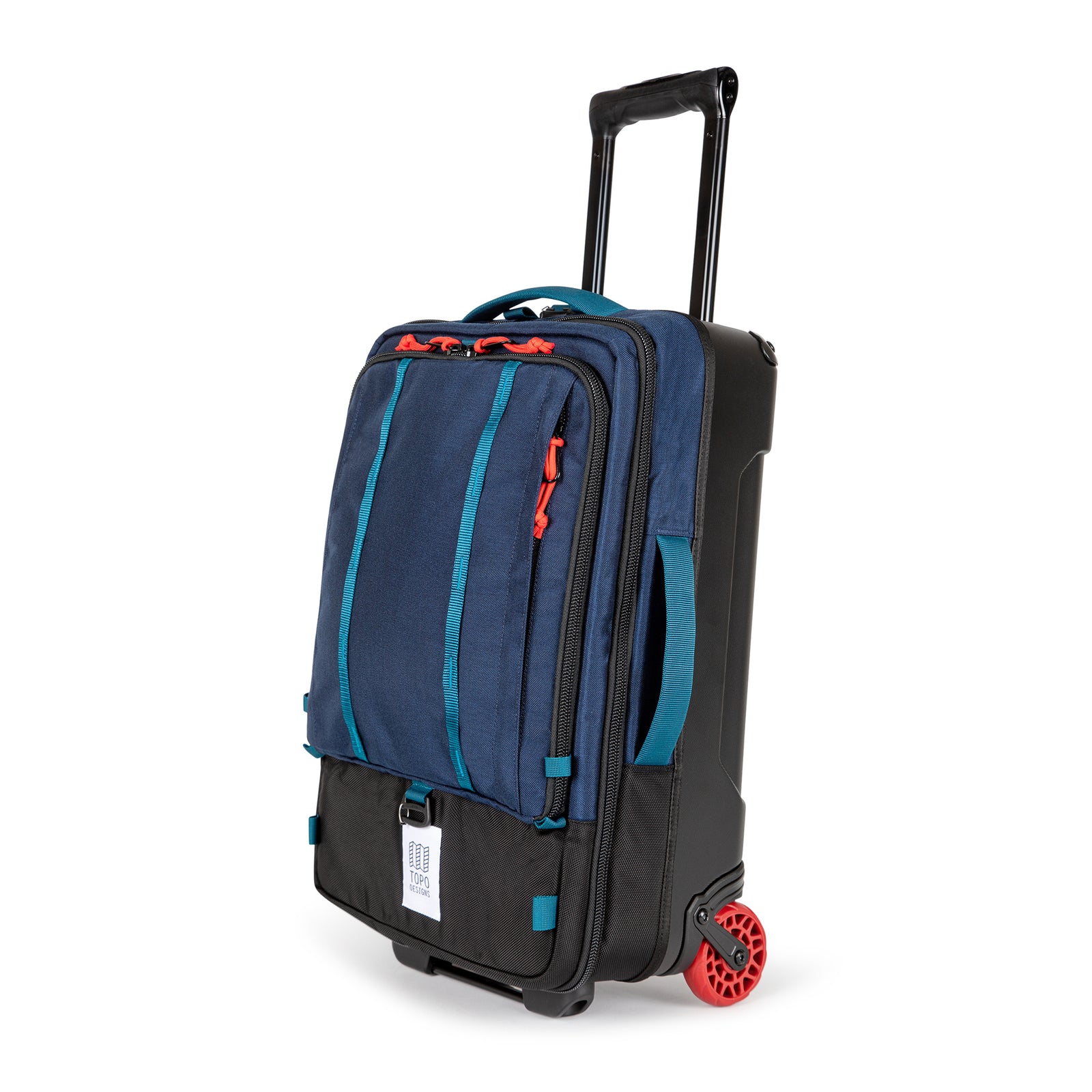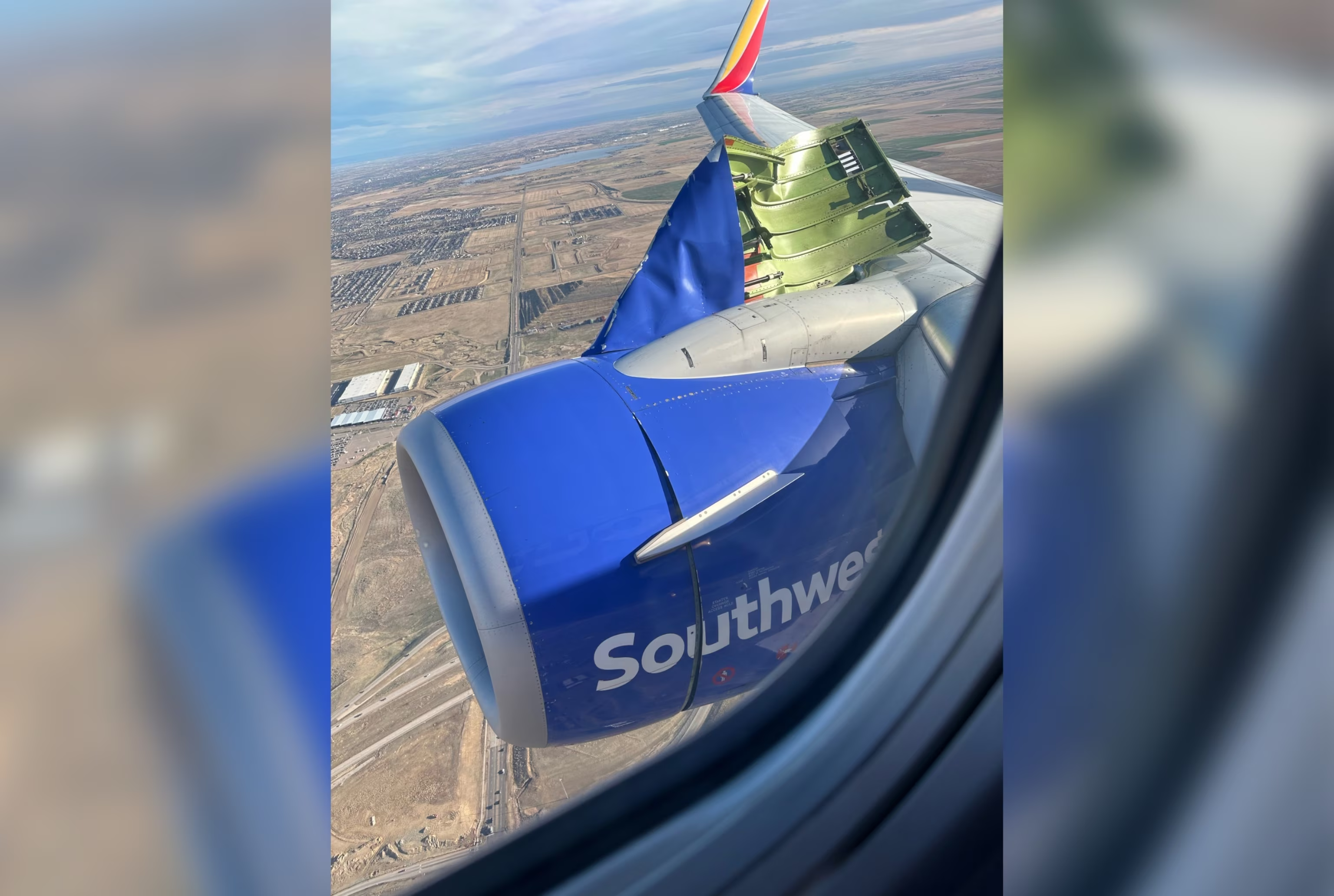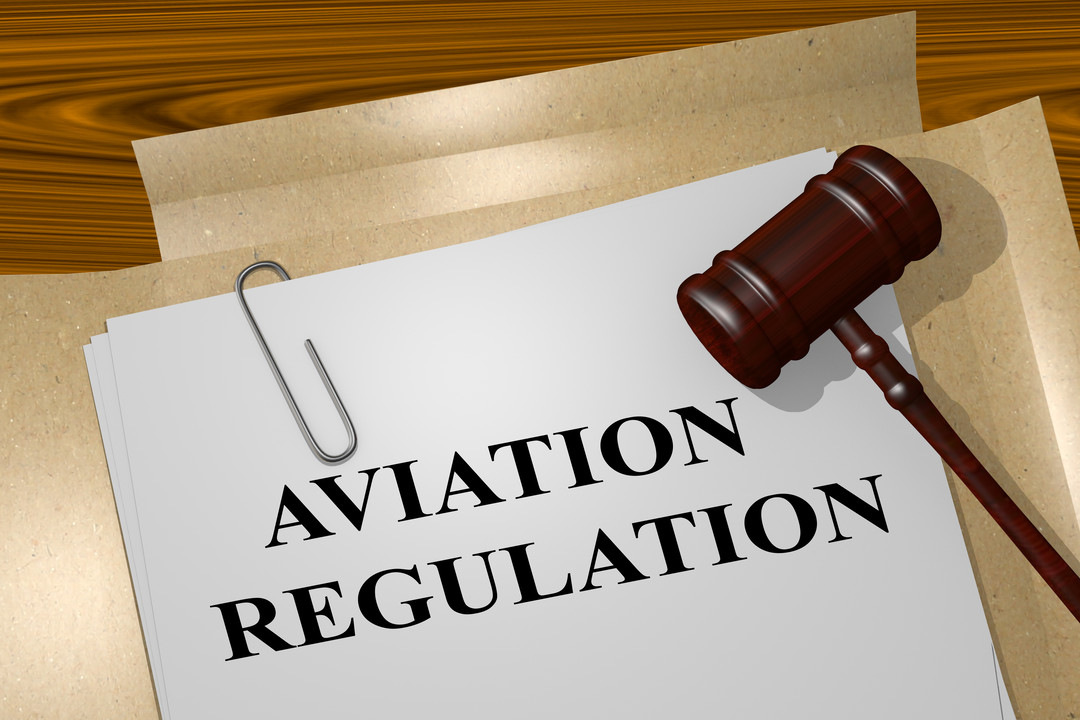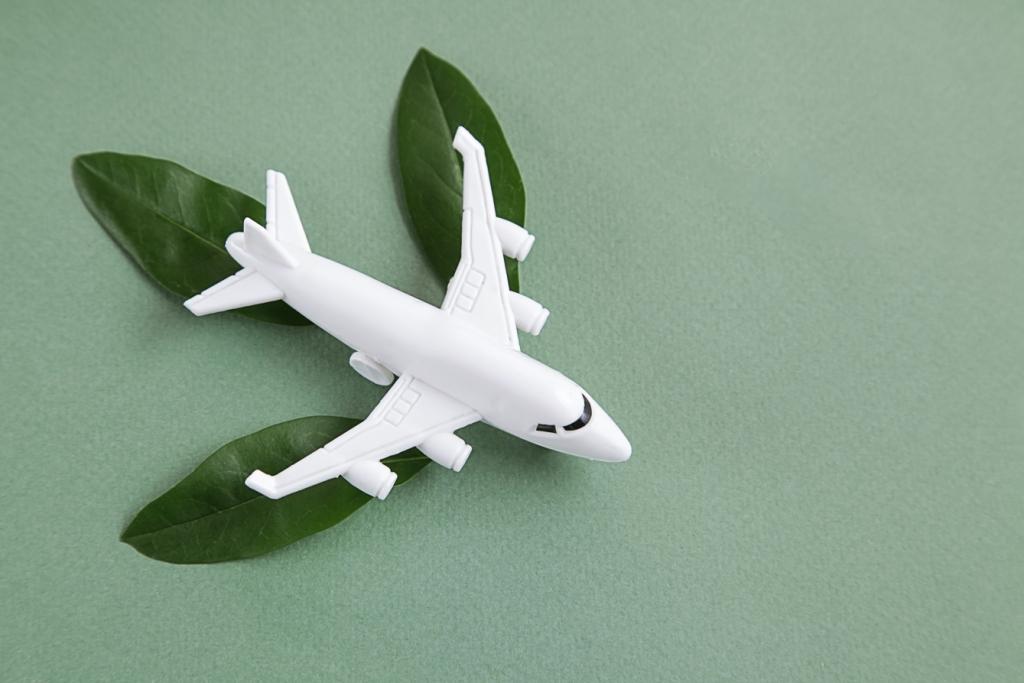Southwest Airlines 737-800 Makes Emergency Landing in Denver
Breaking Aviation News & Videos
@aviationbrk
·
22h
Southwest Airlines 737-800 makes emergency landing in Denver after its engine cowling detached on departure.
Everyone seems to have an opinion about Southwest and Boeing, however, like most people know, everybody disagrees with everyone else’s opinion.
At this point, we need to wait until an investigation is completed to determine what the cause of this event was. It may have been maintenance error, and we need to investigate the reasons for that maintenance error which allowed this to occur, and then treat that symptom in an appropriate way.
That doesn’t mean condemning the airline, manufacturer, or the maintenance technician without understanding what occurred.
===========
Ensuring Aviation Safety: A Perspective from a 40-Year Veteran Helicopter Pilot
As news of the recent emergency landing of a Southwest Airlines 737-800 in Denver due to engine cowling detachment spreads, opinions are abundant but understanding remains scarce. As a 40-year veteran helicopter pilot with Treasure Coast Aviation and Safety Services (TCASS), it is imperative to approach such incidents with a balanced perspective and await the findings of thorough investigations.
Firstly, it’s crucial to acknowledge that incidents like these warrant serious attention and swift action. The safety of passengers and crew should always be the top priority in aviation. However, knee-jerk reactions and baseless accusations serve no one. Instead, it’s paramount to let the investigative process unfold before drawing conclusions.
Speculation often leads to finger-pointing, whether it’s directed at the airline, the aircraft manufacturer, or maintenance personnel. Yet, true progress in enhancing safety comes from a comprehensive understanding of the root causes of such incidents. Was it a maintenance error? Was there a flaw in the design or manufacturing process? These are questions that demand answers, and only a thorough investigation can provide them.
At TCASS, we understand the complexity of aviation safety. Our decades of experience have taught us that safety is not achieved through blame but through collaboration, transparency, and continuous improvement. It’s about identifying weaknesses in the system and addressing them proactively to prevent future occurrences.
In the case of the Southwest Airlines incident, it’s essential to refrain from rushing to judgment. Instead, let’s focus on supporting the investigative authorities as they meticulously analyze every aspect of the event. Only through this diligent process can we gain the insights needed to bolster safety measures across the industry.
As a company deeply committed to aviation safety, TCASS emphasizes the importance of learning from every incident, no matter how rare or isolated it may seem. Our dedication to this principle is evident in the services we provide, as an aviation safety consulting organization.
TCASS stands by its testament to unwavering commitment to advancing safety in aviation. By harnessing the power of data analysis, TCASS empowers airlines, maintenance crews, and regulatory bodies to identify potential risks and take proactive measures to mitigate them.
In conclusion, while the recent incident involving a Southwest Airlines 737-800 is undoubtedly concerning, it’s crucial to approach it with a level head and a steadfast commitment to safety. Let’s allow the investigative process to run its course and use the findings to drive meaningful change. Together, we can ensure that incidents like these become increasingly rare as we continue to prioritize safety above all else.
Keywords: Aviation Safety, Boeing 737-800, Southwest Airlines Incident, TCASS, TCAS2, Maintenance Error, Safety Investigation, Collaborative Safety Efforts.
For more details, visit ABC News.
If you’ve enjoyed our content, don’t miss out on future updates! Subscribe to our blog for the latest in aviation safety and industry insights. Click here to subscribe.
Top 10 Aviation Safety Tips for Travelers
Introduction
Safety should always be a top priority when it comes to air travel. Whether you’re a frequent flyer or embarking on your first flight, being informed about aviation safety can make all the difference in ensuring a smooth and secure journey. In this article, we’ll share ten essential aviation safety tips to help passengers navigate their flights with confidence and peace of mind.
1. Choose Your Seat Wisely
Selecting the right seat can play a significant role in your safety and comfort during the flight. Opt for seats near the emergency exits for easy access in case of emergencies. Additionally, consider choosing seats towards the front of the aircraft, as studies have shown that these areas tend to experience fewer incidents during crashes.
2. Pay Attention to the Safety Briefing
Although it may seem routine, paying attention to the pre-flight safety briefing is crucial. Listen carefully to the flight attendants’ instructions on seatbelt usage, oxygen mask deployment, and emergency exits. Familiarize yourself with the location of the nearest exits and alternative evacuation routes.
3. Fasten Your Seatbelt Correctly
Ensure that your seatbelt is fastened securely throughout the flight, even when the seatbelt sign is turned off. The seatbelt should be low and tight across your lap, with the buckle securely fastened. In case of unexpected turbulence, having your seatbelt fastened can prevent injuries and keep you safe.
4. Follow Cabin Crew Instructions
Respect and adhere to the instructions given by the cabin crew at all times. They are trained professionals responsible for your safety onboard. In case of emergencies or unexpected situations, follow their guidance promptly and without hesitation.
5. Be Mindful of Overhead Bin Items
When stowing your carry-on luggage in the overhead bins, ensure that they are securely placed and do not pose a risk of falling out during the flight. Avoid overloading the bins or placing heavy items that could injure passengers in case of turbulence or sudden movements.
6. Familiarize Yourself with Emergency Procedures
Take a moment to review the safety card located in the seat pocket in front of you. It provides essential information on emergency procedures, including how to use the oxygen masks, life vests, and emergency exits. Knowing these procedures beforehand can help you stay calm and act quickly in case of emergencies.
7. Keep Your Shoes On
While it may be tempting to kick off your shoes and relax during the flight, it’s advisable to keep your shoes on at all times. In the event of an emergency evacuation, wearing shoes can protect your feet from sharp objects, debris, and slippery surfaces.
8. Stay Hydrated and Stretch Regularly
Maintaining good hydration and blood circulation is essential during long flights. Drink plenty of water throughout the flight and take breaks to stretch your legs and move around the cabin. This can help prevent blood clots and reduce the risk of deep vein thrombosis (DVT).
9. Secure Loose Items During Takeoff and Landing
Before takeoff and landing, ensure that all loose items such as laptops, books, and electronic devices are safely stowed away in your carry-on luggage or under the seat in front of you. Secure tray tables, seatbacks, and footrests in the upright and locked position.
10. Stay Calm and Alert
Lastly, remain calm and alert throughout the flight, especially during periods of turbulence or unexpected events. Keep your attention focused on the cabin crew’s instructions and be prepared to follow emergency procedures if necessary. Remember that aviation safety is a shared responsibility, and your cooperation plays a vital role in ensuring a safe and pleasant flight for everyone.
Conclusion
By following these aviation safety tips, you can travel with confidence, knowing that you’re well-prepared to handle any situation that may arise during your journey. Safe travels!
Understanding Aviation Safety Regulations: A Comprehensive Guide
Introduction
Aviation safety regulations play a crucial role in maintaining the highest standards of safety and security in the aviation industry. These regulations are enforced by various aviation authorities worldwide, such as the Federal Aviation Administration (FAA), European Union Aviation Safety Agency (EASA), and others. In this comprehensive guide, we’ll delve into the importance of aviation safety regulations, explore key regulations enforced by major authorities, and provide insights into compliance requirements for airlines, pilots, and aircraft manufacturers.
The Role of Regulations in Ensuring Aviation Safety
Aviation safety regulations are designed to safeguard passengers, crew members, and aircraft by setting standards and guidelines for various aspects of aviation operations. These regulations cover a wide range of areas, including aircraft design and manufacturing, pilot training and licensing, maintenance procedures, air traffic control, and airport operations. By adhering to these regulations, aviation stakeholders can mitigate risks and prevent accidents, ultimately ensuring the safety and security of air travel.
Key Regulations Enforced by Aviation Authorities
-
Federal Aviation Administration (FAA):
- The FAA regulates civil aviation in the United States and is responsible for ensuring the safety of the national airspace system.
- Key FAA regulations include the Federal Aviation Regulations (FARs), which cover all aspects of aviation operations, from aircraft certification to pilot licensing and airworthiness standards.
-
European Union Aviation Safety Agency (EASA):
- EASA is the regulatory authority responsible for civil aviation safety in the European Union (EU) and European Free Trade Association (EFTA) countries.
- EASA regulations include the European Aviation Safety Regulations (EASRs), which harmonize safety standards across EU member states and ensure compliance with international aviation standards.
-
International Civil Aviation Organization (ICAO):
- ICAO is a specialized agency of the United Nations responsible for establishing international standards and recommended practices for civil aviation.
- ICAO regulations, contained in Annexes to the Chicago Convention, cover a wide range of aviation safety and security issues, including air navigation, aircraft operations, and aviation security.
Insights into Regulatory Compliance Requirements
Compliance with aviation safety regulations is mandatory for airlines, pilots, aircraft manufacturers, and other aviation stakeholders. Failure to comply with these regulations can result in regulatory sanctions, fines, or even suspension of operations. Some key compliance requirements include:
- Aircraft Certification: Ensuring that aircraft meet airworthiness standards and undergo regular inspections and maintenance checks.
- Pilot Training and Licensing: Pilots must undergo rigorous training and hold appropriate licenses and certifications to operate aircraft safely.
- Operational Procedures: Airlines must follow prescribed operational procedures, including flight planning, dispatch, and emergency response protocols.
- Maintenance Standards: Aircraft maintenance procedures must comply with regulatory requirements to ensure the airworthiness of aircraft.
Conclusion
Aviation safety regulations are essential for maintaining the highest levels of safety and security in air travel. By understanding and adhering to these regulations, aviation stakeholders can contribute to the overall safety and reliability of the aviation industry. As technology advances and new challenges emerge, regulatory authorities continue to evolve and adapt regulations to ensure the continued safety of air travel for passengers around the world.
Discover the importance of aviation safety regulations, key regulations enforced by major authorities, and compliance requirements for airlines, pilots, and aircraft manufacturers in this comprehensive guide.
The Sustainable Flight Path: Aviation’s Transition to Sustainable Aviation Fuel (SAF)
The Future of Aviation: Sustainable Aviation Fuel (SAF)
Introduction
Sustainable Aviation Fuel (SAF) plays a pivotal role in the aviation industry’s pursuit of sustainability. As the industry faces increasing pressure to reduce carbon emissions, SAF emerges as a promising solution to mitigate environmental impact while ensuring continued air travel growth.
In this article, we delve into the concept of SAF, its current state, benefits, challenges, technological innovations, policy implications, and the path forward.
What is Sustainable Aviation Fuel (SAF)?
Sustainable Aviation Fuel (SAF) is an alternative to conventional jet fuel derived from renewable feedstocks. Unlike traditional fossil fuels, SAF offers a lower carbon footprint throughout its lifecycle, making it a key component of sustainable aviation.
Feedstocks for SAF production include waste oils, agricultural residues, and non-fossil CO2 sources, which are converted into fuel through advanced refining processes.

The Adoption and Production of SAF
Despite challenges, the aviation industry is making strides in SAF adoption. Initiatives such as the United States’ goal for 3 billion gallons of SAF by 2030 demonstrate a commitment to reducing carbon emissions.
Major airlines and countries are incorporating SAF into their operations, driving innovation and market growth.

Advantages of Switching to SAF
Switching to SAF offers significant environmental benefits, including reduced carbon emissions and decreased reliance on fossil fuels. Additionally, SAF presents economic opportunities, driving growth in green technology sectors.
Challenges Facing Widespread SAF Adoption
Despite its potential, challenges such as cost, technological barriers, and infrastructure limitations hinder widespread SAF adoption. However, ongoing efforts aim to address these obstacles and accelerate market penetration.

Advancements in SAF Production Technologies
Ongoing research and development endeavors focus on improving SAF production efficiency and cost-effectiveness. Collaborative partnerships between aviation stakeholders and governments drive innovation and accelerate SAF adoption.

Government Incentives and Regulations
Policies, regulations, and incentives play a crucial role in promoting SAF production and use. Successful examples from around the world highlight the importance of supportive government frameworks in driving industry transformation.

Strategies for Accelerating SAF Adoption
To overcome challenges and expedite SAF adoption, strategies include scaling up production, reducing costs, and expanding the feedstock supply chain. Global cooperation and innovation are essential for realizing the aviation industry’s sustainability goals.

Conclusion
Sustainable Aviation Fuel (SAF) stands as a beacon of hope for the aviation industry’s journey towards sustainability. With its environmental benefits, economic opportunities, and technological advancements, SAF offers a path to a greener future in aviation.
As stakeholders across the industry unite in their commitment to SAF, we move closer to achieving net-zero carbon emissions and building a more sustainable aviation ecosystem.
Join us in embracing Sustainable Aviation Fuel (SAF) as a catalyst for change and a cornerstone of aviation sustainability.






